
Posted on October 14, 2020 |
The sudden advancement of the Vinca culture during the Neolithic age remains an enigma but an even more curious subject are their thousands of figurines with triangle-shaped heads. Are they merely depictions of ancient deities or were the Vinca artists influenced by unnatural events?
In the beginning, the Vinca culture was considered a cultural site and part of a larger civilization and therefore remained without much attention for a long time. Initially, the discoveries of pottery and numerous statuettes aroused interest in some academic circles, but it quickly waned.
Only half a century later and only with the help of more new discoveries, it became clear that the Vinca culture was one of the oldest established civilizations, later dated to between 5700 – 4500 BC. It quickly became clear that the existence of such an advanced civilization, while all other cultures and peoples at this period were still in the neolithic age, is an unparalleled discovery.
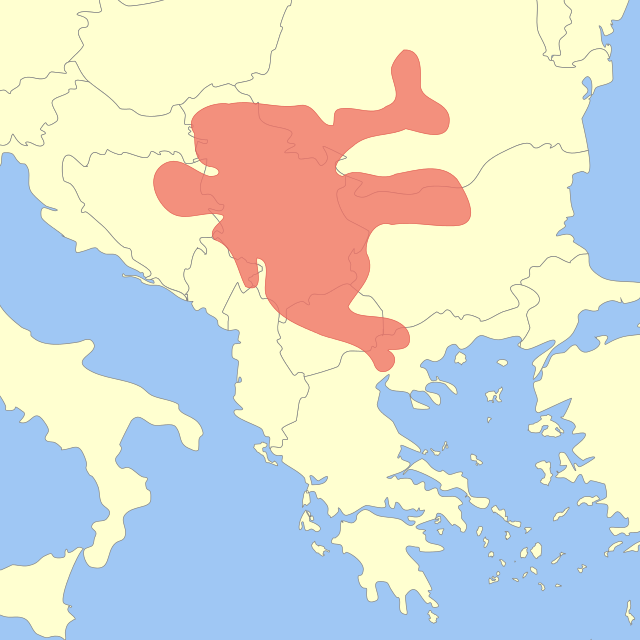 The general area of inhabitance of the ancient Vinca culture. Artifacts have been found in Romania, Bulgaria, North Macedonia, and Greece while the major cities have been discovered in Serbia. Source: Wikipedia
The general area of inhabitance of the ancient Vinca culture. Artifacts have been found in Romania, Bulgaria, North Macedonia, and Greece while the major cities have been discovered in Serbia. Source: Wikipedia
The settlements of the Vinca culture found are an absolute phenomenon, but hardly anything is of such interest as the more than 2,000 figurines with atypical characteristics found. What is the meaning of these strange statuettes with triangular heads?
The Mysterious Triangle-Shaped Heads of the Ancient Vinca Culture
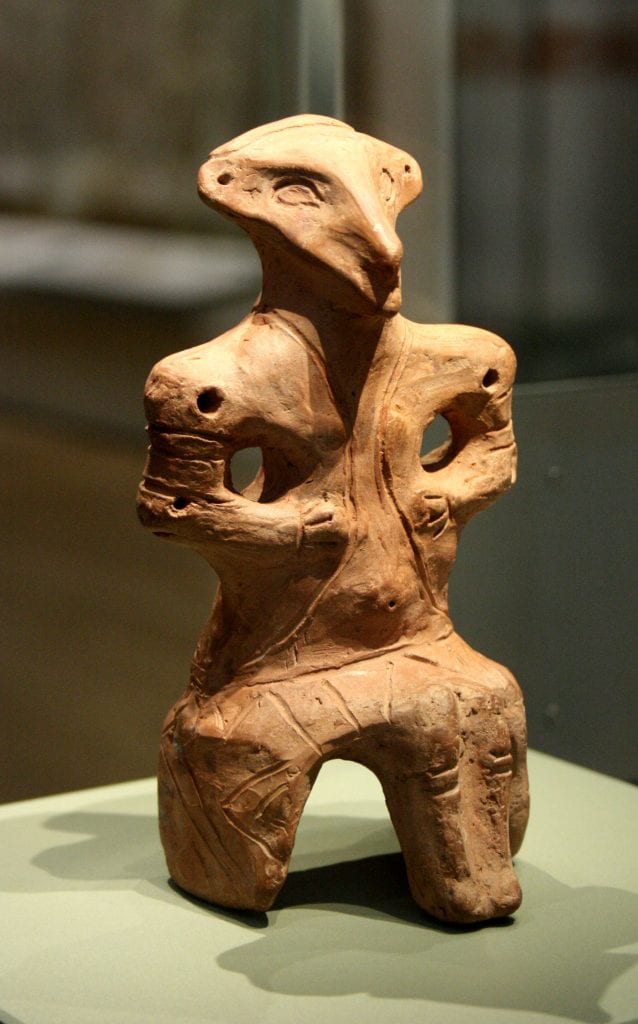 A clay figurine with a triangular-shaped head from the Vinca culture. While it does resemble certain animal species, I do not believe that this is what they depicted. Source: British Museum
A clay figurine with a triangular-shaped head from the Vinca culture. While it does resemble certain animal species, I do not believe that this is what they depicted. Source: British Museum
Excavations in various locations throughout Serbia, Romania, and Bulgaria have discovered over 2000 curious figurines, work of the ancient Vinca culture.
Notice the art of each ancient civilization. In most cases, it includes quite a variety of figures, with atypical motifs and shapes, which, however, can be largely associated with animals or people.
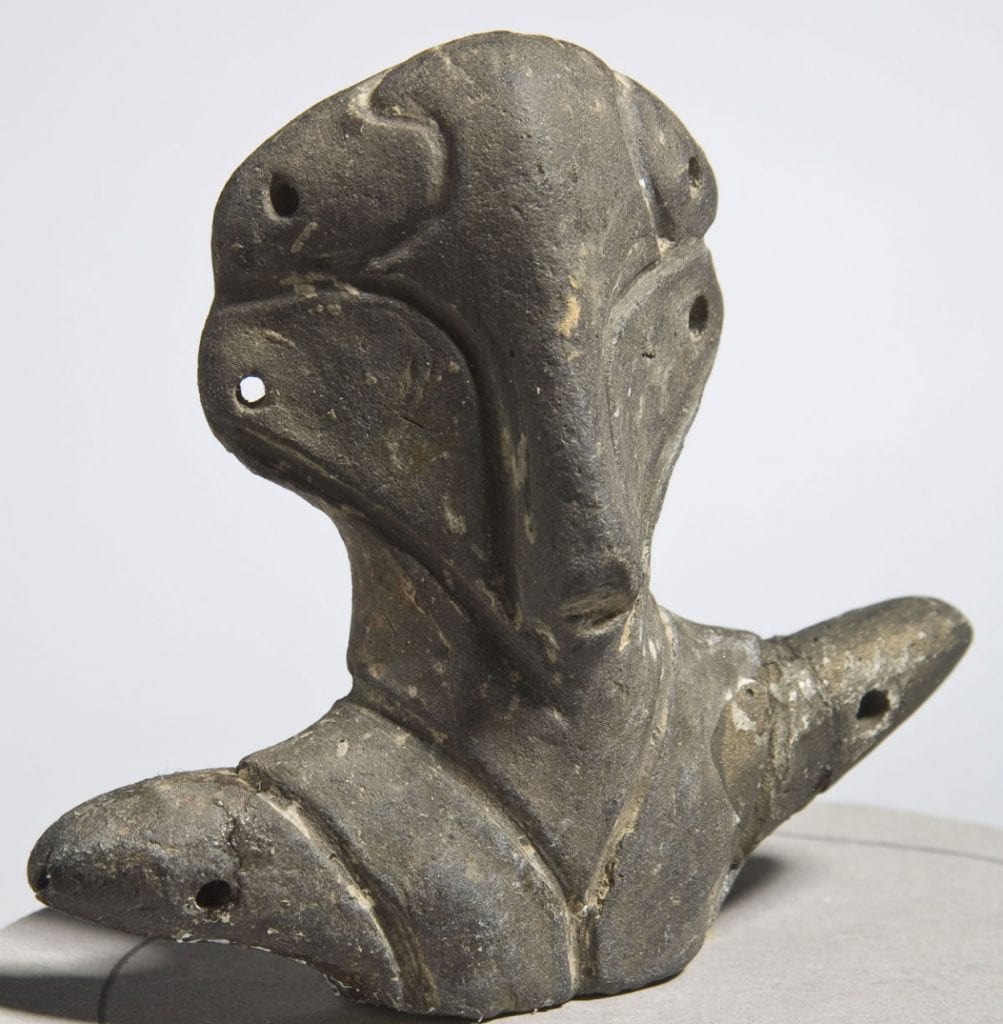 The triangle-shaped heads of the figurines made by the Vinca culture could be the earliest evidence of human contact with extraterrestrial beings. Or, they could be nothing more than depictions of ancient deities. Who knows… Source: Danube Virtual Museum
The triangle-shaped heads of the figurines made by the Vinca culture could be the earliest evidence of human contact with extraterrestrial beings. Or, they could be nothing more than depictions of ancient deities. Who knows… Source: Danube Virtual Museum
However, when we look at the Vinca culture and most of the statuettes with atypical triangular heads, what first comes to mind? If we think similarly, your answer must be extraterrestrial beings, better known as aliens.
Ancient depictions of aliens exist from all across the world and the artwork and statuettes of the Vinca culture could easily be linked to the possibility of ancient interactions with extraterrestrial beings. In fact, surprise or not, this is one of the most favored theories among researchers, although clear evidence in support of such claims does not exist. Or at least, we are not yet allowed to know it.
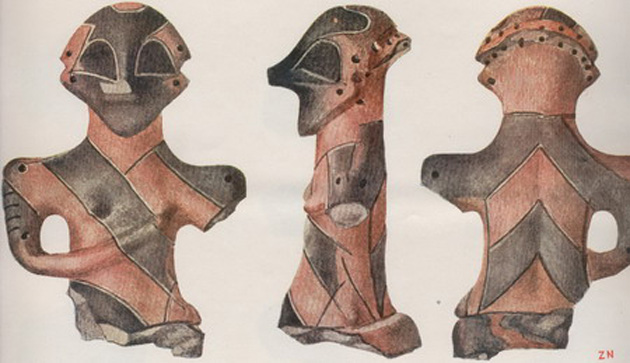
More Vinca statuettes, again with atypical shapes.
Anyhow, a simple comparison with other cultures in the region and of the Old World, say around 6000 years ago, is really more than enough to put the puzzle together. Quite literally, all peoples besides the Vinca culture were living in the Neolithic stage, in undeveloped societies without the ability to write or build megalithic monuments.
And suddenly, snap! – the Vinca culture suddenly went through an unexplained impulse that pushed it towards becoming a civilized society. Their culture advanced to the state of developing a linear writing system, successful metal processing, progress in art, and the overall construction of large cities with a concentration of population where trade was also extremely advanced.
 Statuette depicting a woman, again with the irregular triangular-shaped head. Source: Cleveland Museum of Art
Statuette depicting a woman, again with the irregular triangular-shaped head. Source: Cleveland Museum of Art
And this sudden advancement occurred thousands of years before the earliest established societies in Mesopotamia which makes the ancient Vinca culture a complete anomaly in human development.
With this said, we can return to our main point of attention – the triangle-shaped heads of the figurines and what they could potentially depict.
Extraterrestrial Beings or Merely Animal Depictions
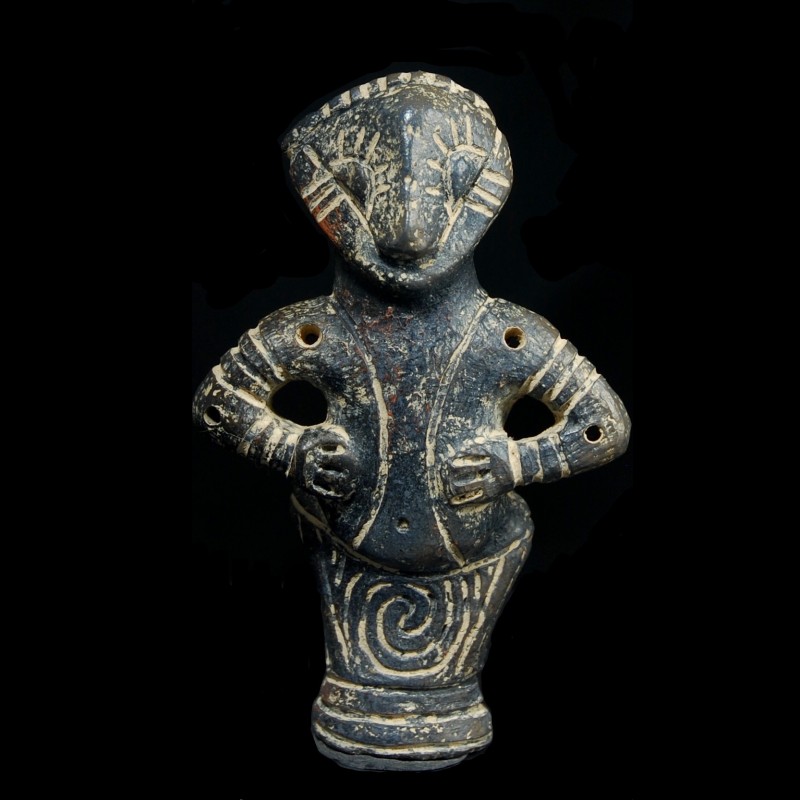
Vinca figurine depicting a woman wearing a long dress. Source: CB-Gallery
Before anything else, I would like to mention the hundreds or perhaps thousands of figurines and statuettes depicting humans and animals in curious shapes, including some rather specific depictions of females wearing clothes similar to modern-day fashion.
In other words, yes, the Vinca culture depicted humans and aliens, just like any other ancient civilization or modern culture. Many people disregard the possibility that the unexplainable shape of the more atypical figures refers to ancient aliens. Instead, they choose to believe that they are a different variation of zoomorphic representations. If you are one of those people, the next few lines will not be an enjoyable read.
Nevertheless, there is no way to deny the close resemblance of many of the figurines to certain modern depictions of extraterrestrial beings as presented in books and movies. Honestly, I even have two or three movies in mind already. I wouldn’t be surprised if writers or screenwriters took influence from the ancient Vinca culture or from any other ancient art.
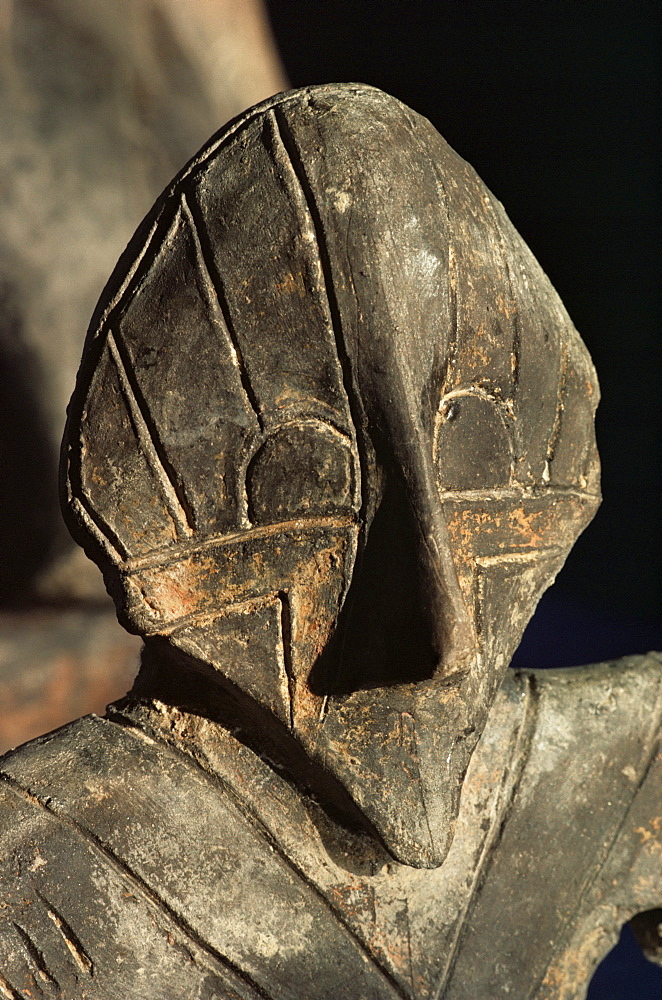 Here is a statuette that is clearly depicted wearing a mask. What could have influenced the ancient Vinca artists to depict beings in masks?
Here is a statuette that is clearly depicted wearing a mask. What could have influenced the ancient Vinca artists to depict beings in masks?
To me, the strange triangular-shaped faces that often seem like a mask above the face can mean two things. The more natural explanation of the two is that the Vinca culture depicted their gods and deities in this manner. If we accept this option, then what is the reason behind this strange artistic representation, completely opposing any regional artistic styles?
The second explanation, of course, is the one that many of us wish to be true – that the artists were influenced by real events seen by the Vinca culture. Why else would they create thousands of inhumane figurines was it not for an impactful event that changed their course of life?